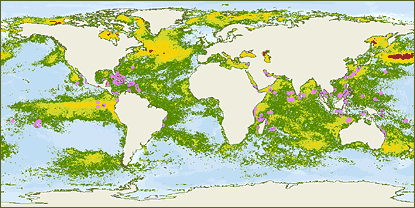When does coral bleaching occur?
Coral bleaching is one of the major threats to corals.
The precise reason for coral bleaching is unknown.
Coral bleaching is conventionally viewed as a response to stressful or detrimental environmental conditions. Unfortunately, environmental stress comes in a wide variety of forms when you are a reef coral.
Bleaching can result from:
- excess sedimentation,
- pollution,
- high sunlight levels,
- low salinity and
- increased water temperatures, which can be considered as the most important cause.
Some of these factors are strongly related to global change.
Coral bleaching and mortality associated with widespread elevated sea surface temperatures (SST) are direct measures of coral stress endured during the last decade. Coral bleaching is often associated with warm temperatures and has been widely predicted to increase in the future.
Exposure for one month at temperatures 1 or 2 degrees Celsius higher than the mean averages at the warmest time of year is sufficient to cause the corals to bleach.

Look at the map. It shows the distribution of SST anomalies and coral bleaching events, during one of the largest El Niño events of this century, from late 1997 until mid-1998.
Although some records of local coral bleaching date back decades, reports of widespread bleaching have been increasing in recent years. The most recent event was not only widespread, but was also more severe in many areas than earlier events. Actual coral death reached 95% in some locations. In a few places, massive, centuries-old corals have died; in some other places, there has now been at least a partial recovery, with loss of only a few corals.
